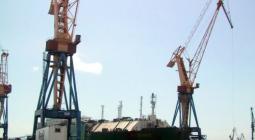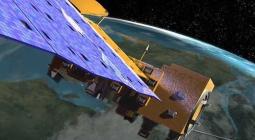Australia’s coalmines and gasfields may be emitting twice as much methane as declared, report warns
Superpower Institute says analysis of Queensland, NSW and Victorian sites shows need for independent reporting of greenhouse gas emissions
Australia’s coalmines and gasfields may be emitting twice as much methane as they currently declare, underscoring the need to introduce independent reporting of the potent greenhouse gas, an energy thinktank has warned.
The Superpower Institute’s Open Methane tool used satellites and ground-based verification to identify 20 “sites of concern” – all involving coal and gas operations – that are releasing “around double” the amount of methane reported.
If validated, the preliminary finding of fugitive emissions would amount to Australia undercounting its annual total by about 6%, the institute’s chief scientist, Peter Rayner, said. They would also place fossil fuels on about an equal footing with agriculture as a source of methane.
“These [results] challenge long-held assumptions about the primary sources of Australia’s methane emissions,” he said. “This is a crucial finding.”
The 20 sites are in Queensland, New South Wales and Victoria, with emissions found to be between about 1.2 and eight times the level reported by operators of the mines and gasfields.
The findings suggest the emissions from future projects – approved or planned – have also been underestimated, Rayner said.
Accurate reporting of greenhouse emissions is vital not least because of methane’s relative importance as a contributor to global heating. Over a 20-year period – or about how long we have to keep warming to 2C above the preindustrial era – methane traps about 80 times more heat in the atmosphere than carbon dioxide.
Australia has also signed up to a global push to cut 2030 methane emissions by at least 30% compared with 2020. In addition, the country has claimed to have lowered overall greenhouse emissions by 28.2% below 2005 levels as of March this year.
Rayner said the findings should be examined by the chief scientist, Cathy Foley, as part of her review of the accuracy and transparency of Australia’s greenhouse gas reporting.
“This is not just an academic exercise,” said Rod Sims, the chair of the institute and a former head of the Australian Competition and Consumer Commission. “Accurate data is the foundation of effective climate policy. If we can’t measure it, we can’t manage it,” he said.
“Methane reductions offer the most immediate and impactful way to slow global warming, given its potency and relatively short atmospheric lifetime.”
The institute will release the results of individual site emissions in coming months. Current satellite technology relies on picking up sunlight reflection from land, making it unsuitable for detecting methane emitted by offshore gas production, Rayner said.
While the findings for fossil fuels may ease some of the pressure for farmers to restrain methane emissions from livestock and cropping, the deployment of satellites could also improve the accuracy of emissions from the land sector, he said.
Australia has long claimed that land has been a net carbon sink, taking up more carbon that it emits. The result, though, is contested by experts who point to deforestation trends particularly in Queensland and NSW.
Cover photo: By The Guardian




